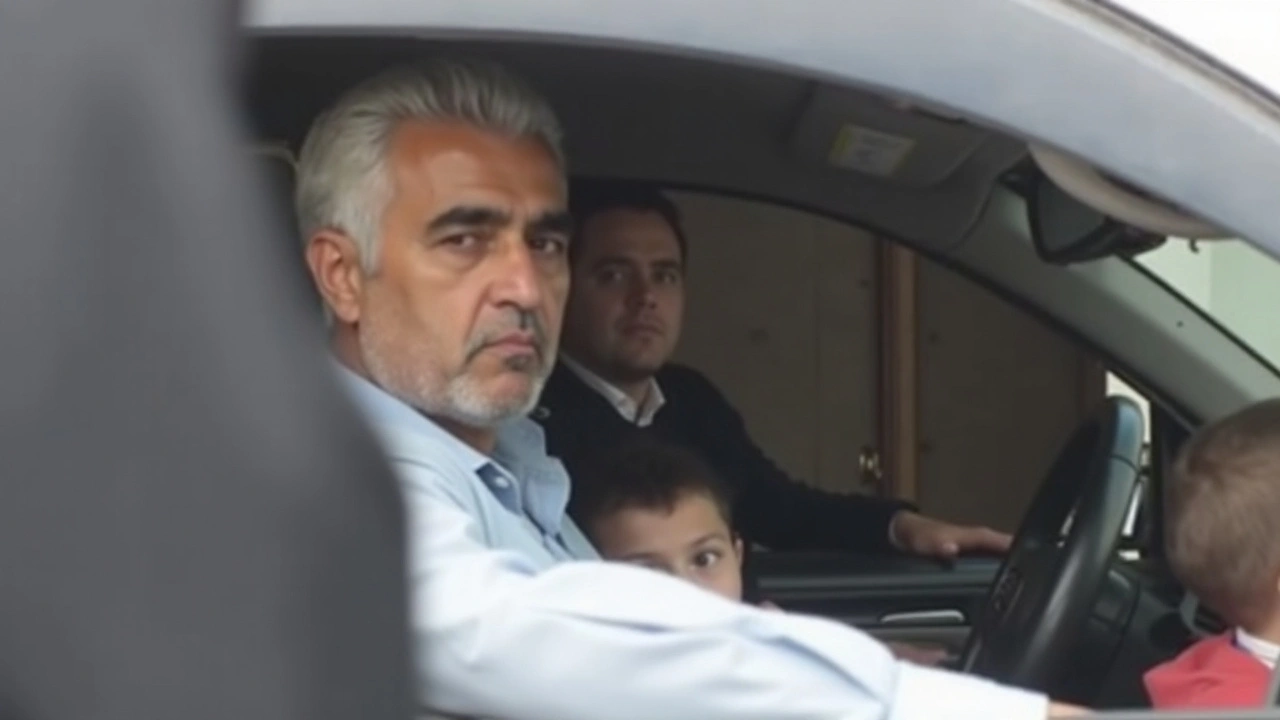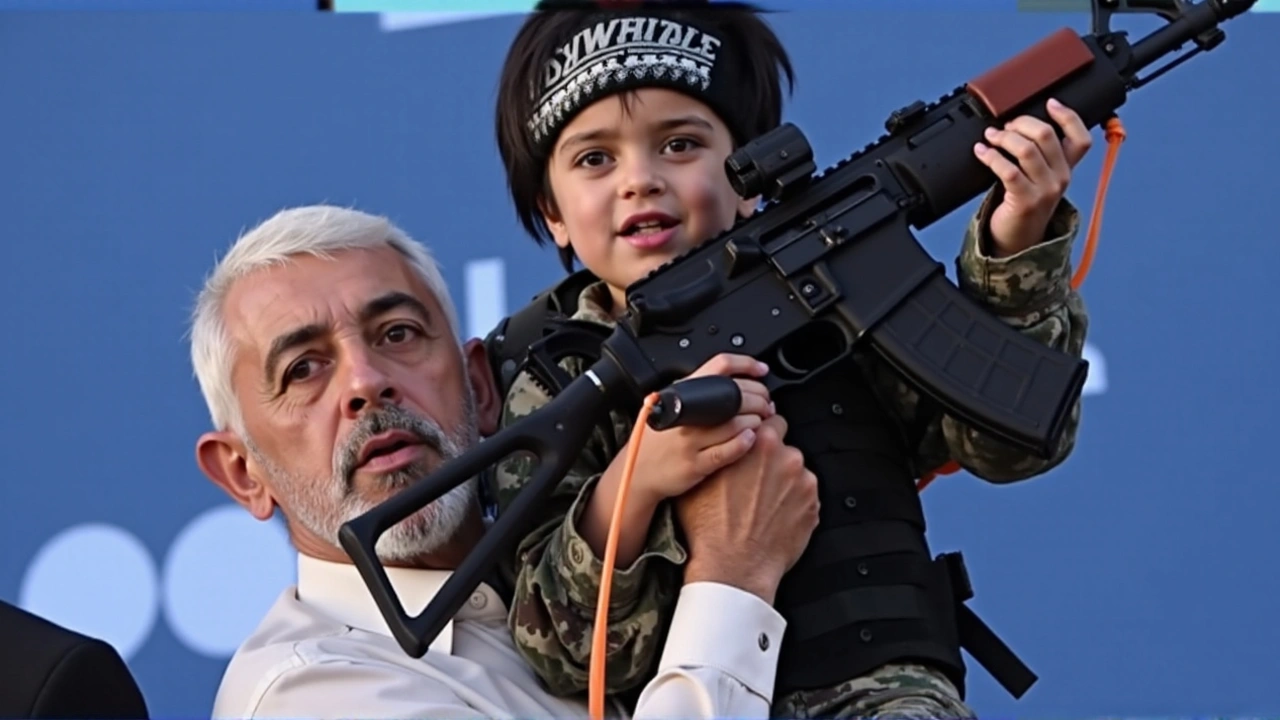The Collaboration Between the US and Israel
In a strategic collaboration that has extended over the past ten months, the United States and Israel have been working extensively to locate and track Yahya Sinwar, a prominent Hamas leader. This extensive mission underscores the unwavering commitment of both nations to combatting terrorism and securing regional stability. The collaboration involves the provision of advanced ground-penetrating radar by the U.S. to Israel, which has significantly bolstered the tracking efforts.
Advanced Technologies and Intelligence Gathering
The provision of ground-penetrating radar technology by the United States to Israel marks a significant milestone in their collaborative efforts. This cutting-edge technology allows for the penetration of ground surfaces and enables the detection of underground structures and activities. This has been instrumental in understanding the movements and hideouts of Yahya Sinwar, who is known to operate from concealed locations within the tunnels beneath his birthplace.
The Role of Ground-Penetrating Radar
Ground-penetrating radar has allowed Israeli and U.S. intelligence forces to gather unprecedented insights into Sinwar’s activities and movements. This technology, coupled with traditional intelligence methods, has led to the accumulation of critical data that is pivotal in the broader strategy to curtail Hamas’ influence. This has included not just tracking Sinwar himself, but also understanding the broader underground network that supports his operations.
Challenges in Tracking Yahya Sinwar
Despite these technological advancements, the task of tracking Yahya Sinwar has been fraught with challenges. One significant hurdle has been the fuel shortages in Gaza, which have disrupted electronic communication methods. This led Sinwar to switch from electronic messaging to utilizing couriers for his communications. This shift has complicated the monitoring of his communications, as traditional electronic intercepts were no longer effective.
Efforts to Facilitate Monitoring
In response to these challenges, Israel Defense Minister Yoav Gallant took decisive action by pushing for fuel shipments to Gaza. The intent was to restore power to cell networks, thereby enabling the interception of Sinwar’s communications once again. This strategic move was aimed at facilitating the gathering of crucial intelligence, despite the complex and dynamic conditions on the ground.
The Importance of Yahya Sinwar’s Communications
Intercepted messages have provided valuable insights into Sinwar’s daily routines and habits. Particularly notable is his habit of monitoring Hebrew media. This suggests that he stays informed about Israeli perspectives and developments, which may influence his strategic decisions and actions. Understanding this aspect of his behavior has been crucial in shaping the intelligence gathering strategies of the joint Israeli-U.S. forces.
Sinwar’s Monitoring of Hebrew Media
The intelligence gathered indicates that Sinwar regularly tunes into Hebrew media. This habit underscores the complex dynamics of his leadership and decision-making processes. By staying abreast of Israeli media, Sinwar is likely trying to anticipate Israeli responses and adjust his strategies accordingly. This element of psychological and informational warfare adds another layer to the already intricate conflict.
The Impact on Hostage Negotiations
While significant strides have been made in gathering intelligence on Sinwar, the impact on hostage negotiations remains a complex and sensitive issue. Despite the collaborative efforts, Israel has not shared information regarding U.S. citizens held by Hamas. This raises questions about the broader implications of the intelligence gathered and how it will affect ongoing negotiations and strategies to secure the release of hostages.
Potential Outcomes and Strategic Decisions
Understanding the potential outcomes of utilizing the gathered intelligence is critical. Israeli and U.S. forces must weigh the potential benefits of tracking and possibly neutralizing Sinwar against the implications for hostage negotiations. The decision to act on the gathered intelligence must be carefully calculated to avoid jeopardizing the lives of hostages and exacerbating the conflict.
The Future of the Conflict in Gaza
The ongoing efforts to track and potentially neutralize Yahya Sinwar highlight the intricate nature of the conflict in Gaza. Sinwar’s death is seen by some as a pivotal factor that could lead to the declaration of Hamas’ defeat and potentially bring an end to the conflict. However, the broader implications of such an action, including the potential impact on hostage negotiations and regional stability, remain uncertain.
Challenges Ahead
The road ahead is fraught with challenges. The intelligence efforts must continue to adapt to the dynamic and evolving conditions on the ground. The collaboration between the U.S. and Israel symbolizes a united front against terrorism, but the complexities of the situation necessitate careful and strategic planning. Balancing the immediate need to neutralize key figures like Sinwar with the overarching goal of long-term stability in the region is a delicate task that requires meticulous consideration.

Conclusion
The cooperation between the United States and Israel in tracking Yahya Sinwar has underscored the importance of advanced technologies in modern intelligence efforts. The deployment of ground-penetrating radar has significantly enhanced the ability to gather critical data. However, the challenges posed by conditions on the ground and the broader implications for hostage negotiations continue to complicate the mission. As the situation evolves, the strategic decisions made by Israeli and U.S. forces will play a crucial role in shaping the future of the conflict in Gaza and the broader fight against terrorism.

